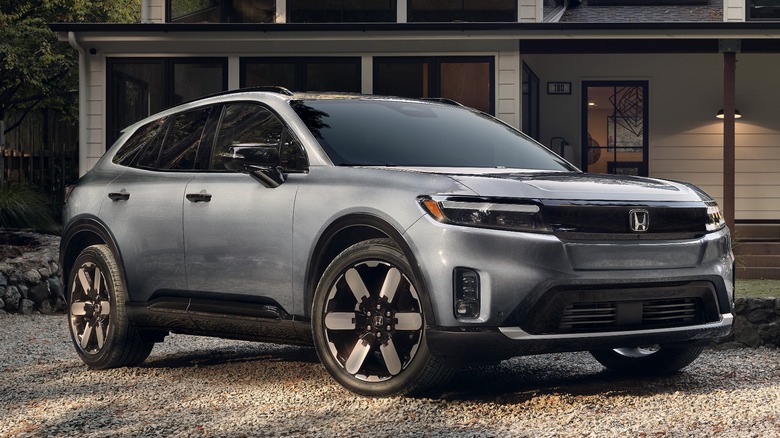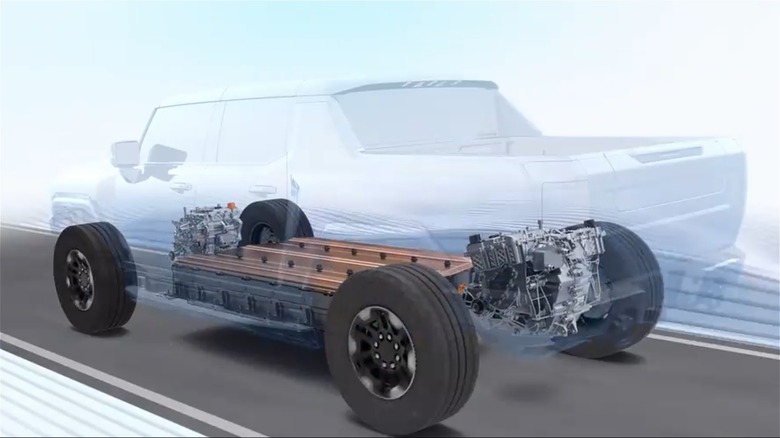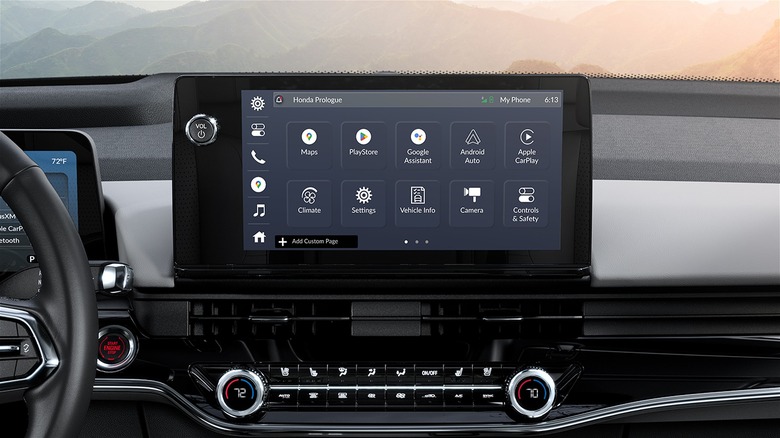Is The New Honda Prologue Actually A Chevy?
When it's discovered that one automaker used parts from another to make a new vehicle, worries of something called badge engineering emerge. The concern is legitimate, because badge engineering — a car company simply putting its name on another company's car — has led to some of the best and worst cars.
Fortunately, while the new EV Prologue borrows some parts of the 2024 Chevrolet Blazer EV, not only has Honda been open about the situation, but the Prologue isn't a carbon copy of GM's vehicle. In fact, we got an opportunity to experience it with our 2024 Honda Prologue first drive and while we aren't sure about the name choice, in some areas this EV surpasses the competition.
Starting from scratch on a new vehicle model is an involved multi-step process that on average takes six years. Shortages and increases in the prices of raw materials have driven up the costs associated with developing a new model, especially an electric one, in the last few years.
Honda and GM are cooperating to bring a selection of EVs to market that remain affordable. The two brands are combining their knowledge, facilities, and industry experience to enable faster production and lowered costs. The Prologue was able to arrive on U.S. shores more swiftly due to this partnership.
GM's electric platform but Honda's design input and tuning
Underneath the Prologue's sleek exterior lies Ultium electric architecture from GM. The Ultium platform is highly adaptable, allowing for as many as three motors and 24 battery modules. It also includes systems designed to lessen the demands on the batteries, offers more advanced battery module monitoring, and was designed to optimize fast charging technology. Rather than expend the time and resources to develop its own EV platform from scratch, Honda decided to utilize the already-made foundation of GM's Ultium technology. (While GM says this move will help lower prices for buyers, there are hidden costs of electric car ownership you need to know.)
However, that doesn't mean that Honda simply handed off its new EV to GM. Even as the production for the Prologue was underway in GM's Warren, Michigan technical center, Honda was onsite and directly involved in the process. In addition, even though both the Prologue and EV Blazer share the same base architecture, Honda performed extensive tuning in areas like suspension, acceleration, and steering. Meaning, it's highly unlikely the Prologue will drive similarly to GM's electric SUV.
The exterior and interior of the Prologue are different
One glance at the Prologue and EV Blazer side-by-side, and it's clear they don't share many visual similarities. While the EV Blazer exhibits a sharp angular aesthetic, the Prologue offers a more rounded body shape. Honda's approach to the headlight and taillight design is more conservative than GM's more exaggerated hawk-like look, which may appeal to a wider audience.
Inside the Prologue, Honda's instrument panel and center media display are visually distinct from GM's, with the exception of some knobs and buttons. However, the Prologue looks decidedly out of place next to other Honda models that have shared a similar design over the years. Some argue that the lack of cohesion between the Prologue and its other Honda brethren could be jarring for longtime owners of the brand. With the exception of the Prologue, Honda interiors typically exhibit elements like a rounded turn signal, tactile knobs with chrome accents, and a uniquely designed steering wheel.
Does this mean that cooperative projects between automakers will result in the loss of unique brand aesthetics? Time will tell, but despite Honda and GM teaming up for the Prologue, it's certainly not a rebadged EV Blazer.


